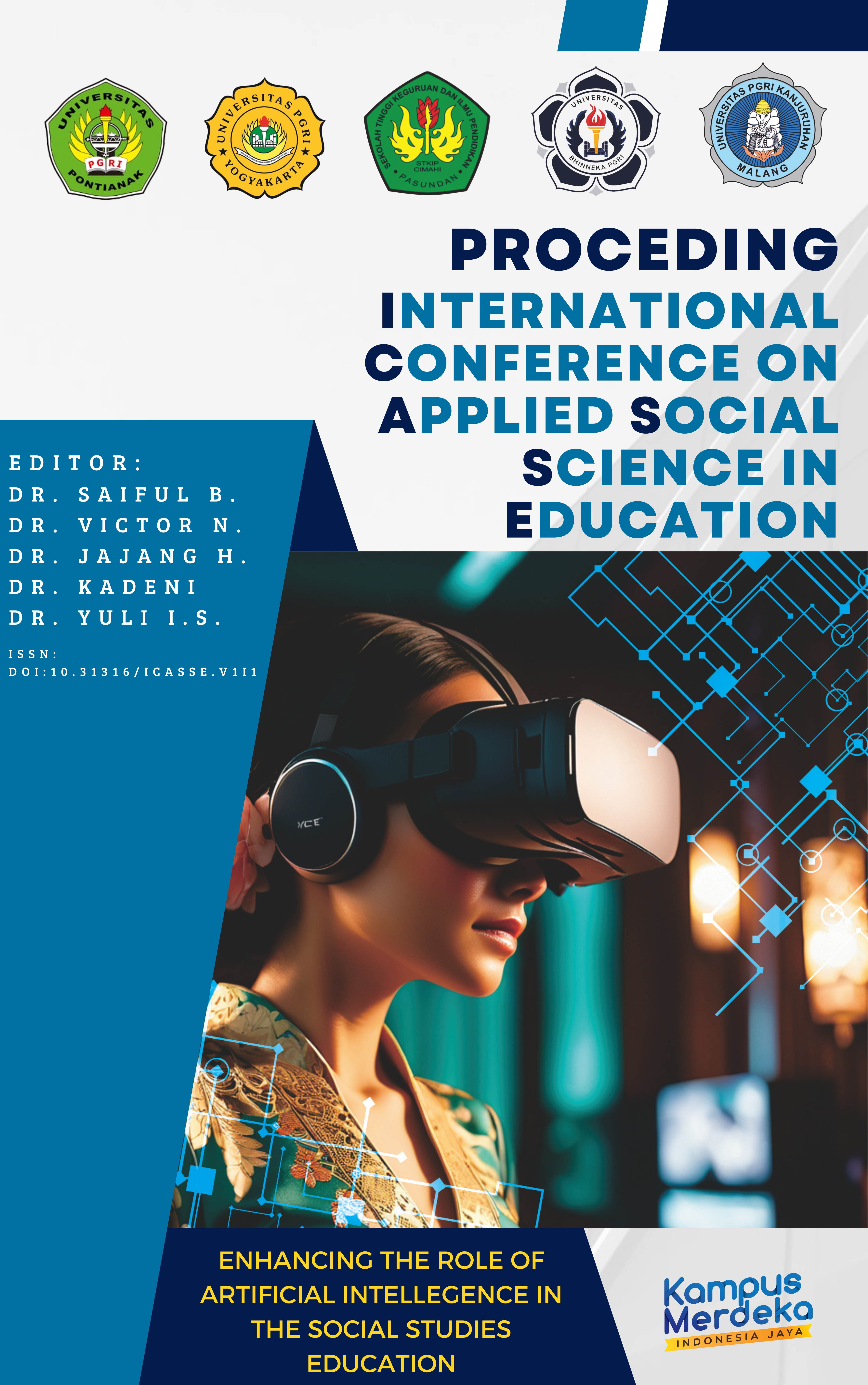INCREASING MOTIVATION, ACTIVENESS AND LEARNING OUTCOMES OF IPS THROUGH A COOPERATIVE LEARNING MODEL TYPE JIGSAW FOR GRADE V STUDENTS OF KYAI MOJO JUNIOR HIGH SCHOOL IN YOGYAKARTA IN THE 2023/2024 ACADEMIC YEAR.
DOI:
https://doi.org/10.31316/icasse.v1i1.6996Abstract
Increasing Motivation, Activeness and Social Studies Learning Outcomes Through the Jigsaw Type Cooperative Learning Model for Grade V Students of SDN Kyai Mojo Jetis Yogyakarta Academic Year 2023/2024. Thesis. Yogyakarta: Masters Program, PGRI University Yogyakarta, 2024. This study aims to improve motivation, activeness, and social studies learning outcomes through the Type Jigsaw Cooperative learning model for grade V students of Kyai Mojo Jetis Yogyakarta State Elementary School. This research is a Classroom Action Research. This research was conducted at SD Negeri Kyai Mojo Jetis Yogyakarta. The subjects in this study were fifth grade students of SD Negeri Kyai Mojo Jetis Yogyakarta, totaling 28 students. Data collection techniques in this study used questionnaires, observation, and documentation. Data analysis techniques using descriptive qualitative and descriptive quantitative.The results showed that 1) learning model with Cooperative Type Jigsaw can increase learning motivation. This is evidenced by the motivation to learn social studies students in the pre-cycle with the category less good, increased in cycle I to 1 student (3.58%) and in cycle II to 19 students (67.86). 2) Learning by using the learning model Cooperative Type Jigsaw can improve learning activeness. This is evidenced by the social studies learning activeness of students in the pre-cycle who have very poor category learning activeness, increased in cycle I to 9 students (32.14%) and in cycle II to 26 students (92.86%). 3) Learning by using the Jigsaw Type Cooperative learning model can improve learning outcomes. The increase in student learning outcomes seen from the results of the pre-cycle, cycle I and cycle II has increased. Students experienced complete learning in the pre-cycle as many as 4 students (14.28%), increased in cycle I as many as 16 students (57.14%), and increased in cycle II as many as 28 students (100%).





